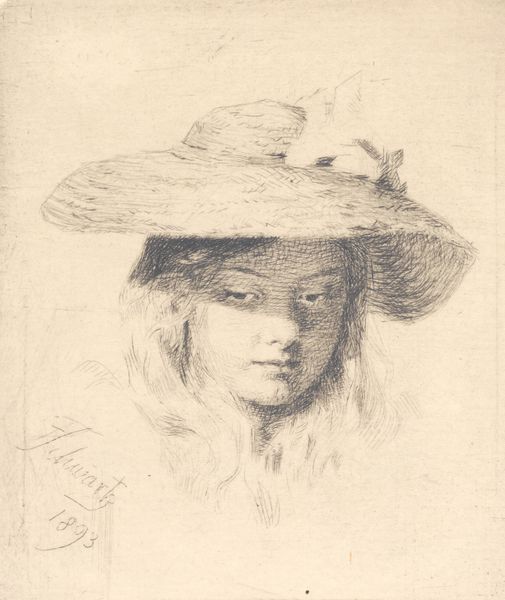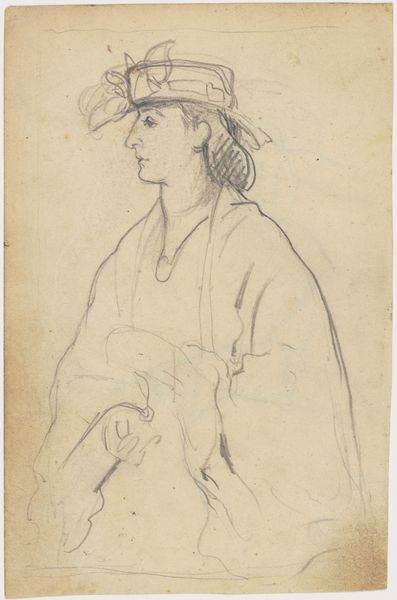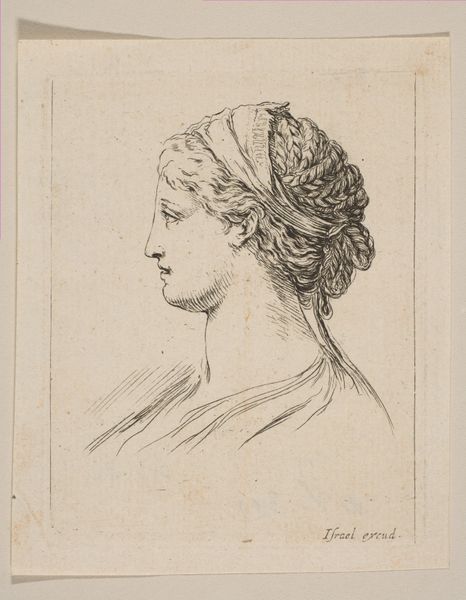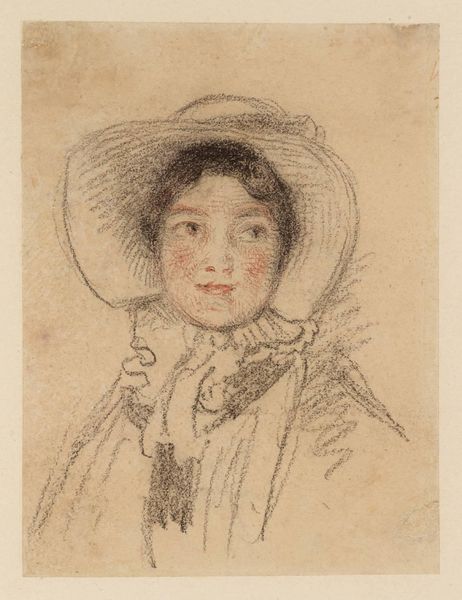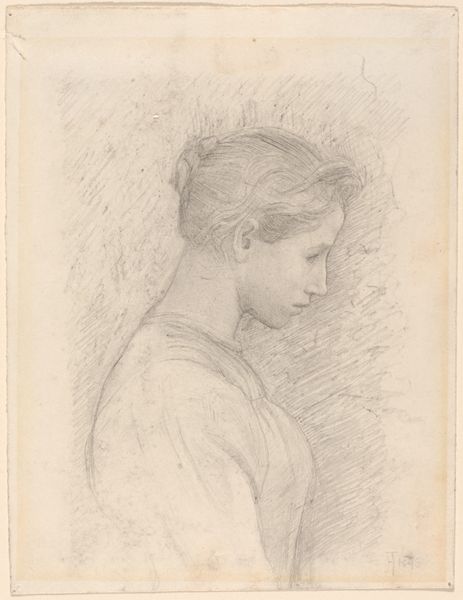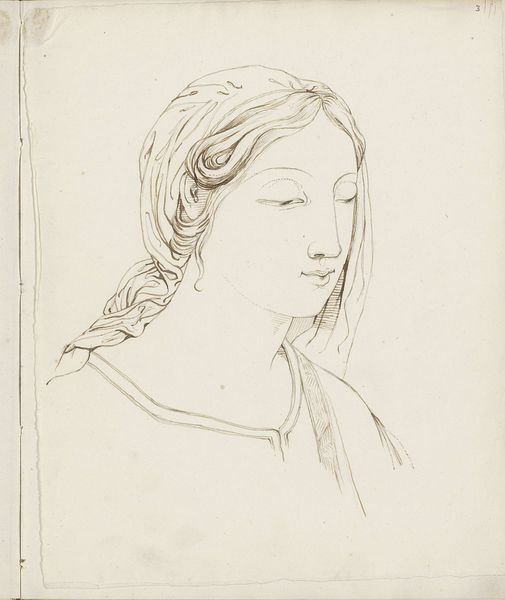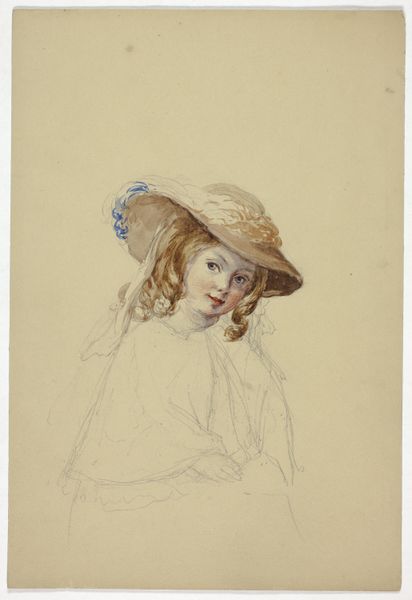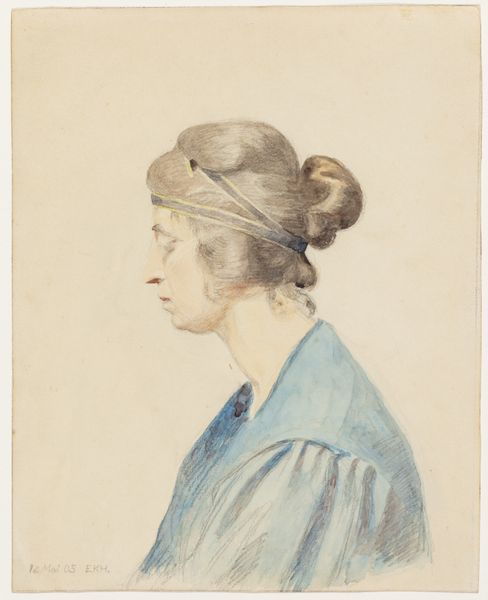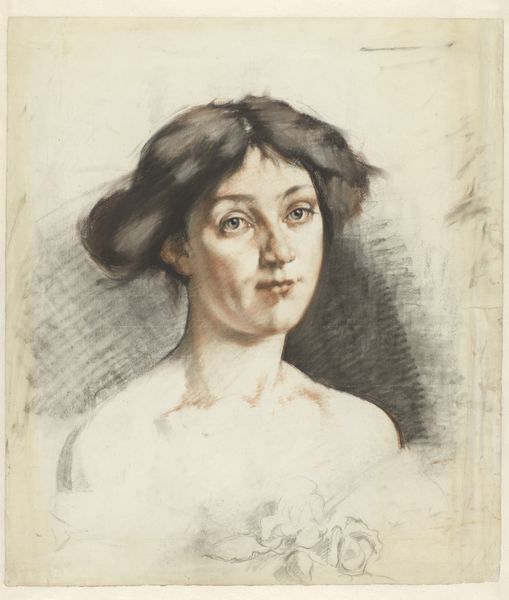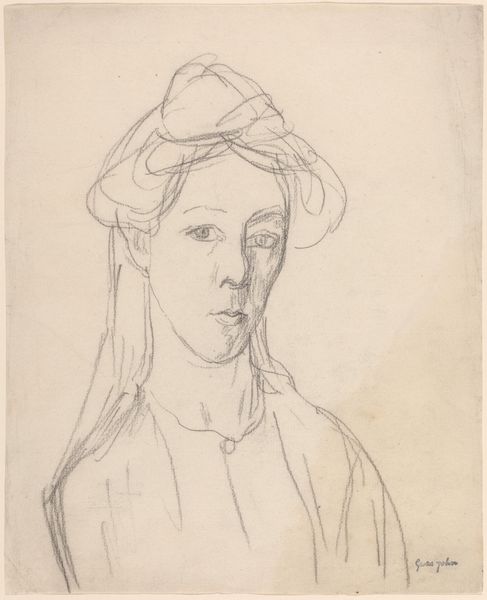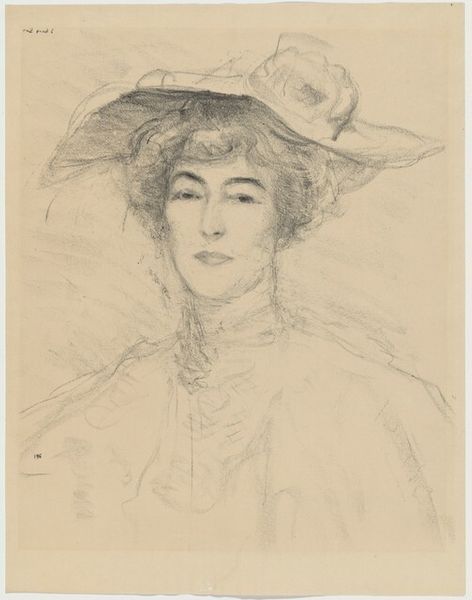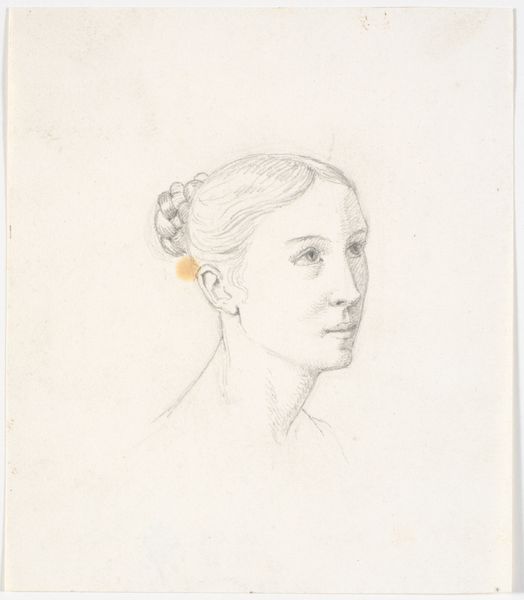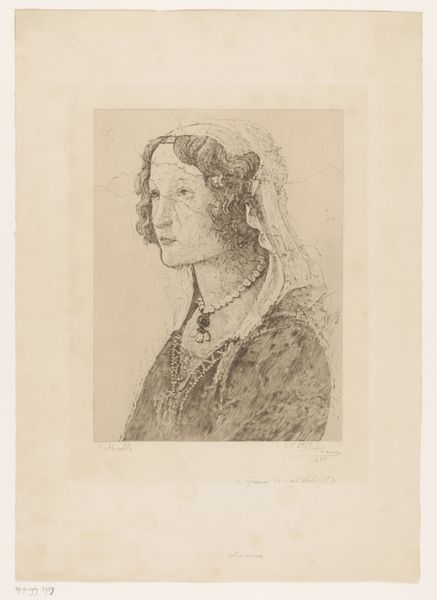
Bildnis eines Mädchens mit Strohhut, Dreiviertelprofil nach links 1857
0:00
0:00
Copyright: Public Domain
Curator: Here we see Johann Jakob Hoff's 1857 pencil drawing, "Portrait of a Girl with Straw Hat, Three-Quarter Profile to the Left," now held in the Städel Museum collection. Editor: It has an immediate wistful quality, doesn't it? The soft lines and muted tones create a sense of gentle melancholy. Her gaze seems fixed on something beyond the frame. Curator: Hoff's position in 19th-century German Romanticism significantly shapes our reading. This was a time of intense introspection, yearning for simpler times, often linked to the construction of national identity. The girl's straw hat and unassuming pose situate her within that cultural narrative, far removed from court portraiture of earlier times. Editor: Precisely, that "simplicity" can be deceptively complex. Consider the socio-economic context; straw hats may speak of rural life but also indicate a working class identity being co-opted by Romantic artists seeking an authentic counterpoint to industrialization. It prompts me to ask who is given the power to define the meaning of such "simplicity." And who benefits? Curator: Interesting questions. Furthermore, Hoff clearly depicts a specific class of young women, potentially caught between worlds. Her clothing suggests a degree of financial stability, yet the subject's gaze hints at deeper socio-political issues relevant to her time. Editor: Also, let’s not forget the gaze of the artist—a white, male artist—and his perspective in portraying this young girl. How does that influence our reception? The drawing captures more than likeness; it encapsulates a particular power dynamic inherent in representation. Her position—vulnerable, observed—makes one consider what this image did or didn’t do to her representation within society at the time. Curator: Absolutely. Understanding the nuances of image-making is vital for decoding visual representations, the artist's intent and its social reception, both then and now. Editor: This artwork makes it incredibly clear how even an seemingly simple pencil sketch carries the weight of its historical, political, and cultural circumstances. Curator: And how, even in an understated way, portraiture participates in broader historical discussions, pushing us to ask complex questions regarding how gender and class operate to portray identities.
Comments
No comments
Be the first to comment and join the conversation on the ultimate creative platform.
